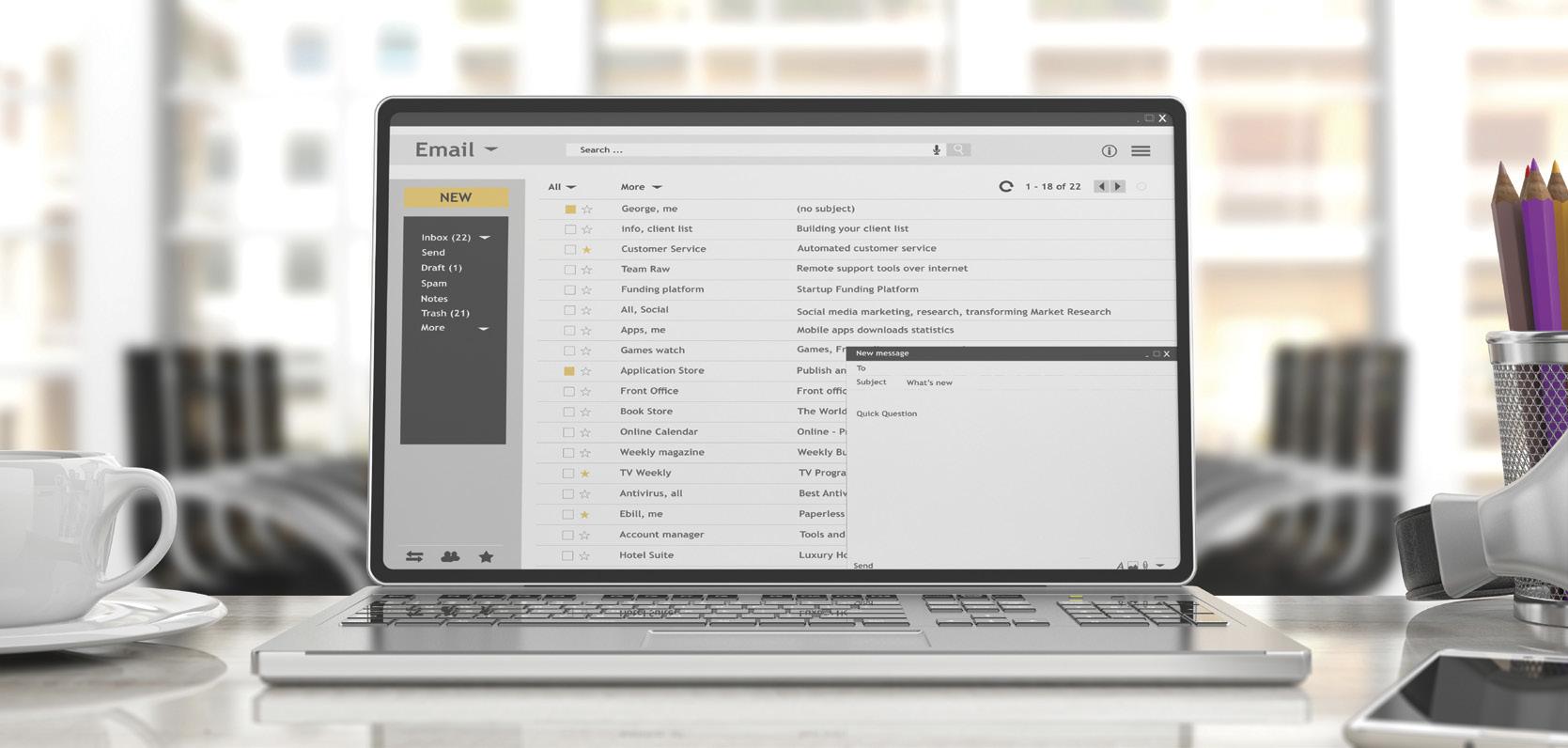
3 minute read
Email Memos, Part 3
OPENING STATEMENT
Using and Citing Authority in E-memos
Advertisement
BY WAYNE SCHIESS, TEXAS LAW, LEGALWRITING.NET
This is part three of a three-part series on e-memos, reporting on Professor Brad Desnoyer’s article E-Memos 2.0: An Empirical Study of How Attorneys Write.
Prof. Desnoyer gathered 113 lawyers’ opinions on four sample email memos that used different approaches to organization, analysis, tone, and content. The memos ranged in length from 172 to 457 words, and the responding attorneys were in private practice (large, medium, and small firms) and governmental, judicial, corporate, and other jobs; they ranged in age from under 30 to over 60.
This column summarizes the final four points from Professor Desnoyer’s research.
1. APPLICATIONS ARE NECESSARY.
Last month’s column reported Prof. Desnoyer’s conclusion that “analytical depth matters.” This recommendation goes along with that, and here’s what it means: It’s not enough to report the relevant legal doctrines and standards; e-memo writers should apply those standards to the facts of the given case. Granted, there are times when the assigning lawyer’s request is simply, “Tell me what the law is.” But outside those assignments, reporting on the law alone is insufficient. Take the next step and apply it.
2. E-MEMOS CALL FOR EXPLANATORY PARENTHETICALS.
In a traditional legal memorandum or in a trial or appellate brief, heavy use of explanatory parentheticals isn’t recommended. For one thing, they can give off the appearance of scholarly writing—seminar papers and law-review articles. For another, they’re often used for less-important cases or for merely bolstering a point. In fact, as I said in this column in 2016, “to some degree an explanatory parenthetical sends the message, ‘Don’t read me. I’m not important.’”
But those reactions are nearly turned upside down in e-memos. Forty-two percent of the respondents reported that explanatory parentheticals should be used frequently or very frequently. It only makes sense. The reader wants to understand the precedents but doesn’t have time for full case illustrations. So, mastering the art of the thorough but concise explanatory parenthetical is worth the effort in e-memos.
3. PREFERENCES TOWARDS FORMAL CITATIONS ARE COMPLICATED.
A mere 17% of the respondents said formal Bluebook citations are “important,” and only four percent said “very important.” Meanwhile, 70% said formal citations are “somewhat important” or “not important.” Yet the e-memo samples with perfect citation form elicited no criticisms or comments on the citations at all. And the two samples with poor citations—missing and incomplete—received low scores and some negative comments:
“Sample [x] was clearly the weakest memo, as it had very few citations (and very few in-text citations) ….” “[T]he [author] had not provided pinpoint cites in the decisions, making it more time-consuming for the [reader] to assess the conclusion.”
So, citations aren’t important unless you mess them up? Or perfect citation form doesn’t matter, but sloppy citation form does? Advice? Include proper, full citations in the e-memo until your supervisor tells you to stop.
4. TRADITIONAL MEMOS AREN’T DEAD.
Although I risk accusations of job preservation, I’m pleased to report that the traditional memo— which I still make my students write—lives on in the real world. Only 17% of Prof. Desnoyer’s respondents reported writing no traditional memos, and 54% reported writing five per year. Ten percent—a small number, I grant—write 30 or more traditional memos per year.
Two other points: First, mastering the full, traditional memo is a key building block in understanding legal analysis and lays a solid foundation for writing shorter documents—like e-memos. Second, anecdotally, employers who hire a lot of lawyers and who must sift and sort numerous job applications, report that they expect to see traditional memos as writing samples. AL










